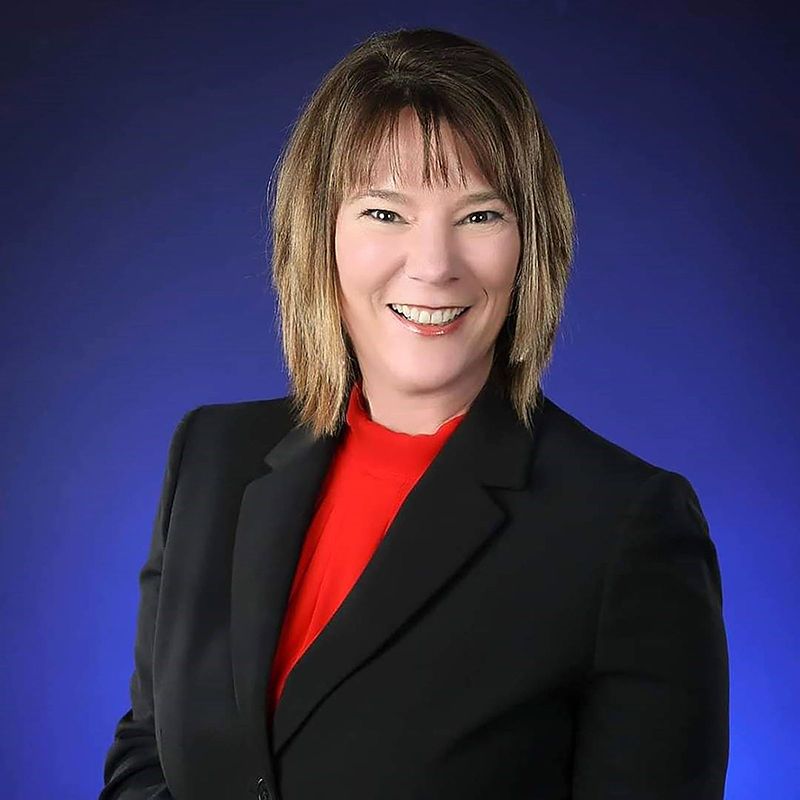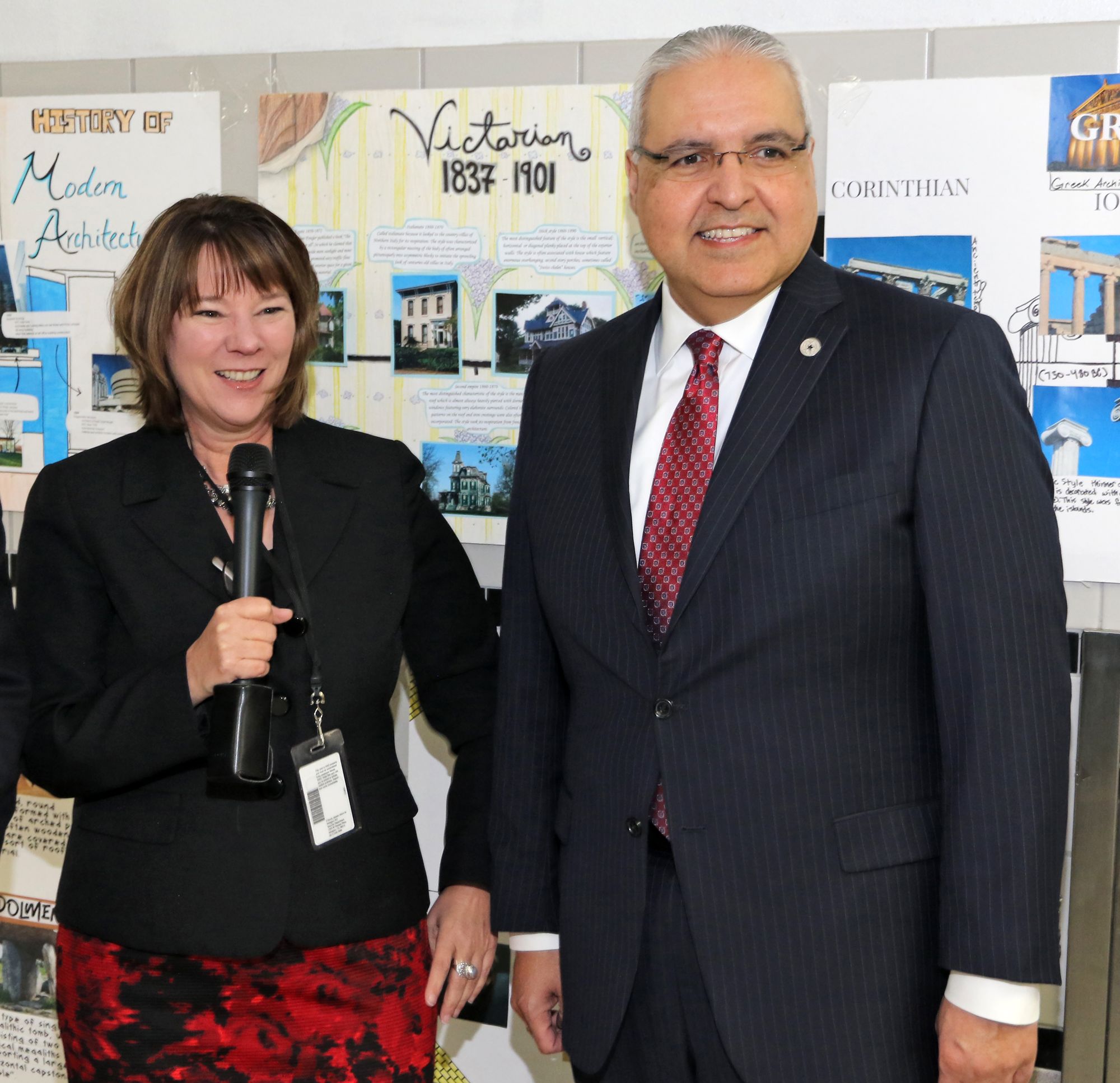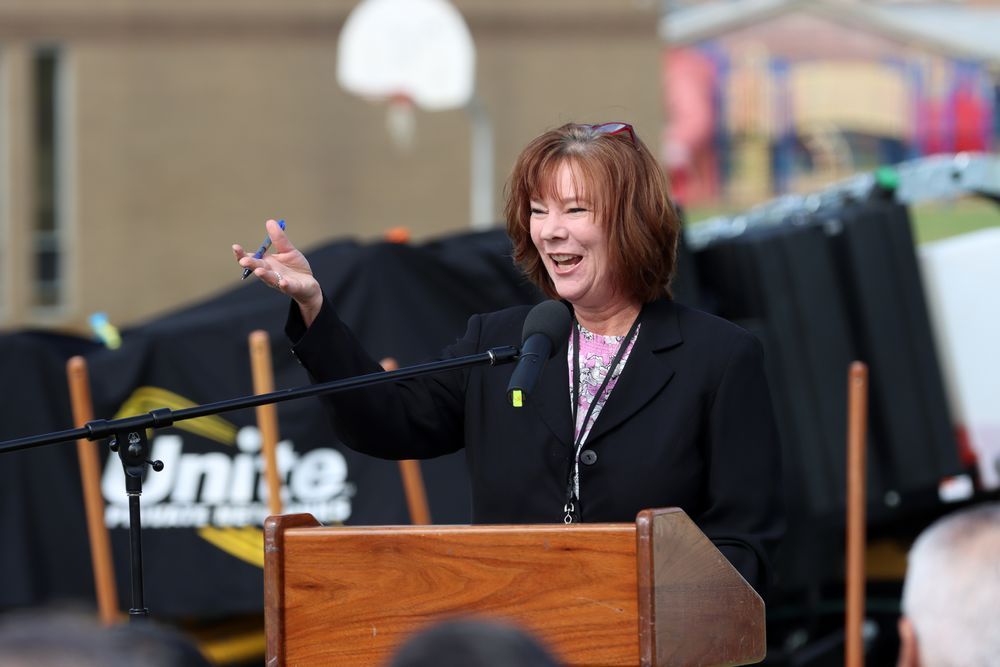Anita Foster: From Crisis to Confidence
How Anita Foster brought years of crisis communications experience to her everyday work at Arlington ISD.

Anita Foster is no stranger to crisis. Before entering the world of education, she served as a chief communications officer at the American Red Cross, supporting the organization’s disaster relief services. For more than 20 years, she witnessed the aftermath of hundreds of emergencies, from local floods and fires to 9/11 and Hurricane Katrina. It was a tough job, she tells us—sleeping on cots, going without running water, enduring sleepless nights and early mornings.
When it came time to make a change, Foster started what she hoped would be a rewarding—but less stressful—job as the Executive Director of Communications and Marketing at Texas’ Arlington ISD. But only a few months later, COVID-19 swept the globe, and Foster found herself in crisis mode once again. Fortunately, that’s where she thrives.
Even as we adjust to life with COVID, the touchstones Foster relied on during the height of the pandemic—proactivity, honesty, and transparency—are still the hallmarks of a successful communications strategy. Here, she tells us why staying ahead of the game matters, whether you’re in crisis mode or not.

What led you to make the switch to education?
Well, education is wild, and I love wild jobs. With my background at the Red Cross, I have a lot of experience in the crisis world. We didn’t consider disasters themselves as crises in the Red Cross—that was just our everyday work—but there are so many potential problems that come with an emergency: disparity of services, mismanagement of funds, not using volunteers right. You can take public school and plug in different concerns, and it’s the same.
So when I read the job description from Arlington ISD, I got excited about it. This was before COVID, but even then, I thought, These are massive challenges—but we can tackle this. We can build strategic communications plans, turn around social media feeds, build presence and community, build our stakeholders, support our superintendent. Those are all things I’ve done across my career in a variety of different ways. It was a great alignment to my skill set.
Was it difficult adjusting to education after so long in the nonprofit world?
I had to learn basically a whole new vocabulary getting here. It’s tough—people in education have their own language that no one else speaks. I’m really glad I had a little bit of time before COVID to try to figure it out. I’m not even joking—I’d sit in meetings in the beginning and think, I don’t have any idea what’s going on here.
Now, our team talks about plain language. Using words like “asynchronous” with parents is probably not a best practice, because they aren’t always going to know what that means. We spend a lot of time trying to make things look simple, even when they’re actually not easy to explain.
How did your previous experience prepare you for COVID and school closures?
We do make a lot of jokes about me showing up from the Red Cross right before a global crisis. When I was interviewing, the superintendent promised time away for spring break and winter break—I still tease him about when those perks start. But I’ve loved it every day. I have no regrets about coming here.
I do feel that we’re on the downside of COVID. I’ve been through enough crises to know that all emergencies have a cycle—this one was just longer than the average. How long did it take to rebuild Ground Zero, or to put New Orleans back together? It takes years, and this is no different. Why would we think that we wouldn’t have learning loss right now? Why would we think that could be solved immediately?
I bring that perspective with me, and I’m glad I do. I learned through many, many years of terrible things that people are extremely resilient, and I am confident that public education and our kids are going to bounce back.

You often emphasize the importance of being proactive in school communications. Why is that so crucial?
I don’t know that I could possibly place enough value on being proactive. I really do believe that. It has helped us build trust, especially at the very beginning of the pandemic when we didn’t know what would happen from one day to the next. I constantly told my team that we had to say what we knew at the time, and that it was okay to say what we didn’t know.
We really adopted that strategy as a team, and I had a lot of conversations with the superintendent about that, too. I learned early in the pandemic that teachers and educators see it as very important to share everything, verify everything, make sure everything is correct before they share information—but that is not how crisis communications works. The longer we wait to share something, the more we allow someone to build a narrative for us instead of telling our own story. We cannot wait. We have to be transparent, and we have to put the message out ourselves.
We’re in Texas, and when the Uvalde school shooting happened, the whole country was talking about it. So we sent a note to families and staff that night reinforcing our safety measures and providing tips from our counseling department that parents could use to talk to their children. We got several messages back that made me really grateful we went down that road—a number of parents saying, Thank you, I had no idea what to say to my kid.
Being proactive communicators is scary because it does require you to take a risk and not wait and see what would have happened if you hadn’t said anything. But we want these parents and families who have children in our care to know what we know. I believed this before COVID, and I believe it now more than ever—we have to be transparent about the good, the bad, and the ugly.
There are lots of controversial topics in education right now. How do you get ahead of those challenges?
Well, there’s no perfect answer, and I’m always interested in hearing philosophies from other communicators on how we handle those difficult situations.
Like everyone else, we dealt with this a lot at the height of the pandemic. Especially when mask and vaccine mandates were being passionately debated, half of our parents on Facebook supported district decisions and the other half opposed. Conversations were often fruitless—if we tried to explain why we had made a particular decision, we would be attacked in the comments by multiple off-topic responses from parents and non-parents.
We decided then that we would answer each question once, with factual information and links to a verified source, if possible. After that, we would stop responding. We thought that was better than not answering at all.
We also do our best to share as much relevant information as possible, and counteract misinformation wherever we can. Right now, Governor Greg Abbott is trying to pass his Parental Bill of Rights here in Texas—so we put up a link on our website to the Texas Education Code’s section on parental rights and responsibilities from years ago. That way, our parents and families can see the rights that they already have. We also keep some fact sheets and FAQs, plus some “Claim vs. Fact” documents to combat misinformation. They’re really simple: This is the claim; these are the facts.
It’s also important to keep things in perspective. We maintain a list of all the issues we need to manage—what’s an actual crisis and what’s not. Right now, we don’t really have any crises. Things like Critical Race Theory, library books—they’re distractions. We can’t ignore them, but we have to see them for what they are. So we try to keep it really simple: Ask and answer.
Now, they might not like that answer, but that’s okay. As a communications team, we talk about this a lot—we would rather a parent, staff member, or stakeholder tell us they don’t like our message than tell us they didn’t get a message. That’s our philosophy.
Sometimes it’s tempting to wait and hope an issue blows over rather than address it head-on. Why is that a bad idea?
I’ve had some experience with hoping that an issue would “blow over,” and I learned two things the hard way: Experience is a great teacher, and hope is not a good strategy.
Communicators today operate in one of the most challenging environments in the history of our profession. Issues management has always been critical, but even more so now. Social media allows everyone to have an opinion and a megaphone, so in a nanosecond, an issue can blow up to crisis level. We have to be prepared for that.
Understanding the difference between an issue and a crisis can help explain why staying ahead of issues is better than sweeping up behind them. I love how crisis management consultant Tony Jaques illustrates this difference: “Issues management is steering the ship out of troubled waters. Crisis management is trying to save the ship after it has struck an iceberg.”
Getting ahead of known issues allows us to address them before they become crises. The more proactive we are with issues management, the less likely it is that an issue becomes a crisis.
The same philosophy applies when we mess something up. I did a presentation years ago called “Mess Up, Fess Up, Fix It.” If we’ve made a mistake, we have to fess up and then actually tell people what we’re going to do about it.
It’s hard. It takes time to do all of that. It takes more time to be proactive than it does to react. But that’s what we have to do.
Part of being proactive is presenting a unified message. How do you get teachers and other staff members on message across the whole district?
That’s such a good question because that’s very hard to do, but not impossible. We are always addressing our staff’s needs and their questions, especially if we are in a crisis situation. We are so big—about 8,500 staff members—so it’s not one-size-fits-all. We take a multichannel approach, pushing out the same message by email, by video, by text message—so that everyone knows what’s going on.
We also make it a point to notify our staff about anything first, before we tell our larger community. During COVID, we saw a lot of teachers from other districts saying they found out about changes to protocols or things like that on Facebook, not from their districts. We don’t ever want that to happen here. Even outside of a crisis, we send them ahead of time exactly what we’re planning to send to parents and families. Everyone’s getting the same unified message, but our teachers and staff are getting it first.
There are no greater advocates for us than those who work here in the district. Looking back at our employee satisfaction surveys, our scores have continued to rise, even during COVID—and I think a lot of that is because of our immediate, regular, transparent communication to the staff. They’re never wondering what’s going on.

So we’ve talked about crises—but how do you proactively share your district’s successes?
When families are making decisions about education, they have five other choices besides your public schools: virtual, homeschool, charter, private schools, or other brick-and-mortar districts. We have to make sure our schools look better than all those other options, and that means emphasizing the positives.
Of course, when you’re in crisis mode, that’s difficult to do. We came back to school this year to the Delta variant, and then this semester started with Omicron. So I would say we probably only turned the corner from crisis mode in the last couple of months. Right before we went out for spring break, we sat down as a communications team with the superintendent and said, Now through graduation, what stories can we produce that are proactive and positive? We made a list of those ideas, assigned them out, and created those stories. Then we pushed them on our blog, social media feeds, video channels, through news releases, and everywhere else we could proactively share our good news.
Now, we also have a proactive pitch plan. We hadn’t been pitching very many non-COVID stories to the media for about two and a half years. So we drew a line in the sand and said, This is where we’re going to start. And we did! We introduced a districtwide STEM curriculum for all four-year-olds in pre-K at the end of March—and we wanted to talk about that. So we pitched the idea to our local magazine, Arlington Today, and it became the cover story of their April issue.
My advice is to just decide you’re going to do it. Put a list together of proactive stories that you know your team can cover and go for it. Then, you can get back to the business at hand: supporting quality education for kids and preparing for the next emergency.

SchoolCEO is free for K-12 school leaders. Subscribe below to stay connected with us!

